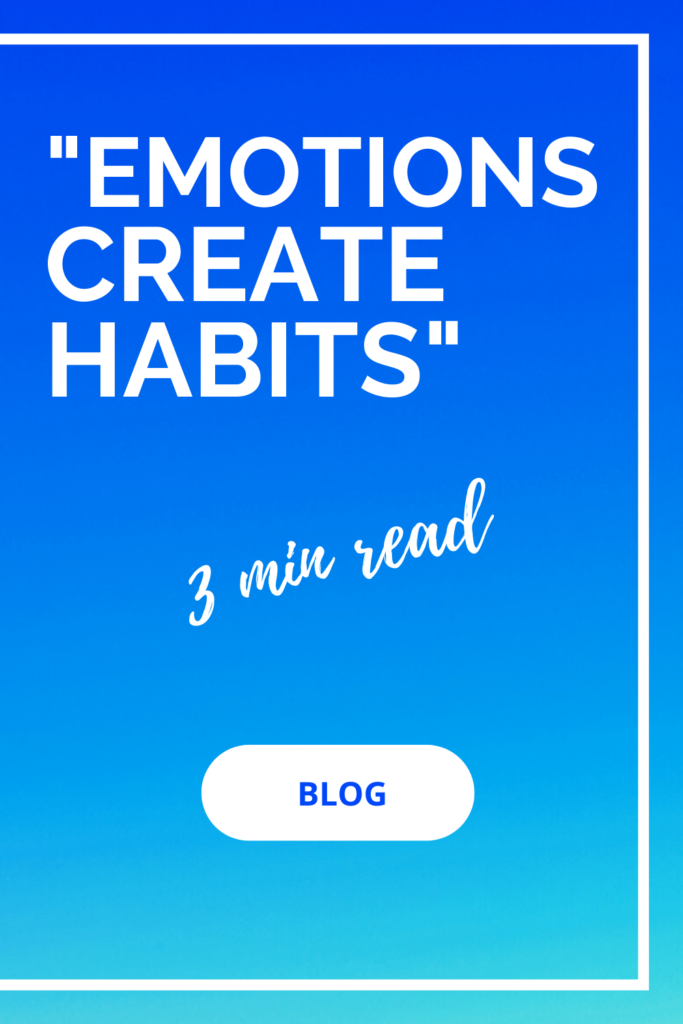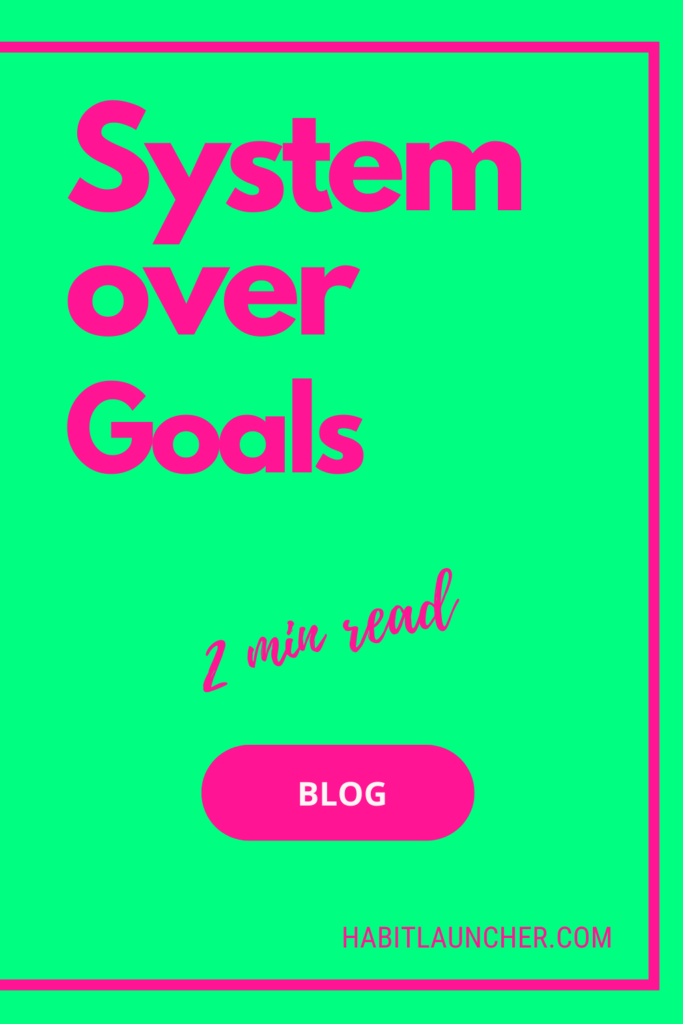
How to lose weight for good?
We prefer system over goals and habits are an all important component of the system for weight loss. Whether we are conscious of them or not, habits are a key part of what we do.
Habits expert and Professor of Psychology Wendy Wood writes in her excellent book that we spend 43% in habit mode on average. This is close to half of our days. As Aristotle explained “we are, what we repeatedly do”.
Willpower is overrated, try habits instead
Habits are also crucial because willpower and motivation are overrated as a source of lasting change. Willpower is limited, it drains, and leaks under the pressures and stresses of everyday life.
Willpower is a great resource to get started, to envision what we want to accomplish, to plan the changes one needs to make. To turn the vision into reality however, it is indispensable to get the 43% of the time spent in habit mode working towards one’s goals.
Hence to lose weight for good, new habits or changes to existing habits are an essential part of our four steps process to lose weight.
Habits as a loop
Many (Dollard & Miller, Duhigg, Clear) explain Habits follow a loop cue – routine – reward. A signal of any type (time, location, sense, emotion, person, action, etc…) stimulates a craving, a routine is executed to get a reward that satisfies the craving.
For example, it is 4 in the afternoon (cue), you feel a lack of energy and the need for an energy boost (craving), so you hit the vending machine (routine) to buy a chocolate bar (reward). It is very important to note that once the habit is formed and the behavior is automatic, the reward becomes useless, the cue suffices to trigger the behavior (4 pm, hit the vending machine).
Habits as a function of motivation, ability and prompt (BJ Fogg)
According to BJ Fogg’s behavior model, a habitual behavior takes place when a prompt, ability and motivation meet. Motivated, easy to do and prompted, the habit will take place.
It is as if habits are unconscious cost benefit analysis. If the cost is low (high motivation, little effort, easy to do) and the initial reward high, the chance of habits happening is improved. If the cost is high (low motivation, big effort, cumbersome, needs planning) and the reward is low or in the future, the behavior will not take place, and a habit will hardly form.
Start easy
For each new habits you want to introduce, make them as easy as possible. Start with one healthy meal, one push-up, 20 seconds cardio, 3 breaths meditation etc. Ensure the new habits can be done, day in, day out, rain or shine.
Easy means really easy and even easier than that. Also ensure you can always default back to the easy version of the new habit you want. This fosters feelings of success. More reps, longer, faster, healthier will come naturally. Without raising the bar, you can always just come back and do the easy initial habit.
“Emotions create habits”
The rewards need to be immediate and aligned with the goal you want to pursue. For example, when trying to lose weight, do not reward yourself with an unhealthy snack or cheat days.
An immediate reward you can us is celebration. Congratulate yourself, give yourself a high five. Do this each time you have done the new habit you want to form. As Stanford behavior scientist and habit expert BJ Fogg explains in his outstanding book on habits: “Emotions create habits”.
Habit Stacking
Creating new habits can be done in various ways. The easiest is habit stacking. You start by identifying a habit you already have and enjoy, and you add a behavior to the new habit.
For example, if you want to drink more water and you already regularly drink coffee, add the water routine to the coffee routine. When I drink coffee, I drink a glass of water. The existing habit is used here as a cue to drink more water.
The existing habit can also serve as a reward for a new habit. For example, once I hit the gym and am done with my cardio, I will hit the coffee shop for a nice rewarding coffee.
Habit Swapping
A second way to create a new habit is to replace the routine in an existing habit. For example, when you are stressed or excited about something, you go to the vending machine and buy a chocolate bar to calm down.
When the cue happens, replace the routine used to get the reward with a more beneficial one. The new habit then becomes, when you are stressed or excited about something, you go to a quiet place and take 3 deep breaths to relax.
Add friction to poor habits
Adding new habits is generally easier than untangling poor ones.
You can potentially improve existing habits by changing the reward. In the above example, if eating something soothes you, you could replace the habitual chocolate bar with a fruit or nuts.
As we saw however, once a habit is formed, the reward becomes useless. Altering the reward may not be as useful as adding friction to poor habits or working on their cues.
Cues / prompts / triggers
Time, location, emotions, people, actions, smells, sights, sounds can all serve as prompts. Time and location are common and stable cues to use to form new habits.
For fitness related habits you can use a day and time as cues. For example, when it is Monday lunch, I hit the gym. When I am done with dinner, I go for a walk. When I shop at Walmart, I buy unprocessed whole foods only.
Context / Environment
Change the cues by altering the environment.
The environment we live in is a limitless source of cues for many of our habits. Aligning the part of the environment we can control with our wished behaviors is necessary.
For example, to improve the health quality of snacks, one can ensure that only fruits are visible and easy to reach.
Emotions beats repetitions
Initially, all changes require conscious decisions and planning. Repetition and more importantly emotions forge them into habits.
How many reps? It depends, it varies. Some habits easily stick, some take much longer. Studies showed a new food related habit formed in 50 to 66 days. For regular fitness, it took longer, around 90 days. The great thing about the four pillars of weight management (diet, exercise, sleep, stress) is that they offer multiple opportunities, each and every day, to apply new habits. The reps pile in quickly.
“Emotions create habits”
Habit expert BJ Fogg suggests emotions are even more important than repetitions. As he explains “one changes by feeling good” and he advises celebrating after each new habit. This creates positive emotions that help wire the brain with the new habit.
With positive emotional associations, new habits can form very rapidly.
Habit Training
To build new habits, train them. Rehearse the entire new sequence (prompt, routine, celebration) a few times in a row. For food or drink related habit, just mimic the new habit.
Habit Tracking
Tracking appears to be beneficial overall, with many studies showing a correlation between tracking and results. Remember correlation is not causation though. Tracking can serve as an immediate reward as well. Once done with a habit, congratulate yourself, add a check mark to the done list and don’t break the streak.
Don’t break the chain
When starting, it is useful to write the new habits down and keep a log. See how the streaks are going and adjust accordingly.
Never ever beat yourself up for not keeping the streak going. If a one off, it does not matter. If many and regular holes in the streak, just adjust the habit and make it easier.
For example, you want to eat more mindfully, evaluating your appetite at each meal but this habit will not stick and you just do not do it. Make it easier, and easier. Start with breakfast only and stack it to an existing morning routine. When I drink my first coffee, I assess my appetite. Assess and adjust.
With enough repetition, a new easy habit will eventually form, that you can use to achieve more goals.
At Habitlauncher.com, working on habits, we help you build a system to reach your goals. To lose weight for good, see our e-book here.

